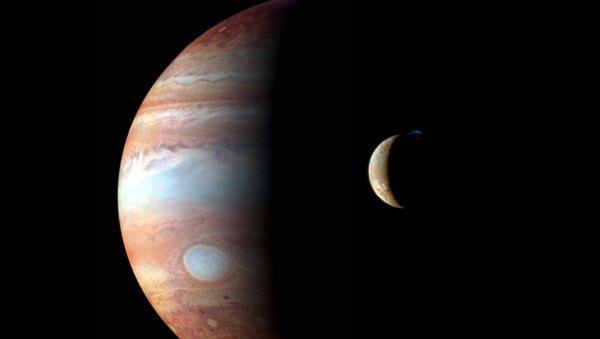Scientists strongly believe that Europa, one of 67 moons of Jupiter, has a deep ocean of salty liquid water beneath its icy shell.
According to a new study, published in Geophysical Research Letters, the ocean might have the right chemical elements for life, since the moon has a similar potential to produce hydrogen and oxygen as Earth, even though it lacks volcanic hydrothermal activity.
The balance of these two elements is a key indicator of the energy available for life. The study found that the amounts would be comparable in scale; on both worlds, oxygen production is about 10 times higher than hydrogen production.
"We're studying an alien ocean using methods developed to understand the movement of energy and nutrients in Earth's own systems. The cycling of oxygen and hydrogen in Europa's ocean will be a major driver for Europa's ocean chemistry and any life there, just as it is on Earth," said Steve Vance, a NASA planetary scientist and lead author of the study.
The scientists calculated how much hydrogen that could potentially be produced in Europa's ocean as seawater reacts with rock in a process called serpentinization.
The icy surface of Europa could provide oxygen and other compounds that could react with the hydrogen since the moon receives radiation from Jupiter, which splits apart water ice molecules to create the materials.
"But actually, if the rock is cold, it's easier to fracture. This allows for a huge amount of hydrogen to be produced by serpentinization that would balance the oxidants in a ratio comparable to that in Earth's oceans," he explained.






